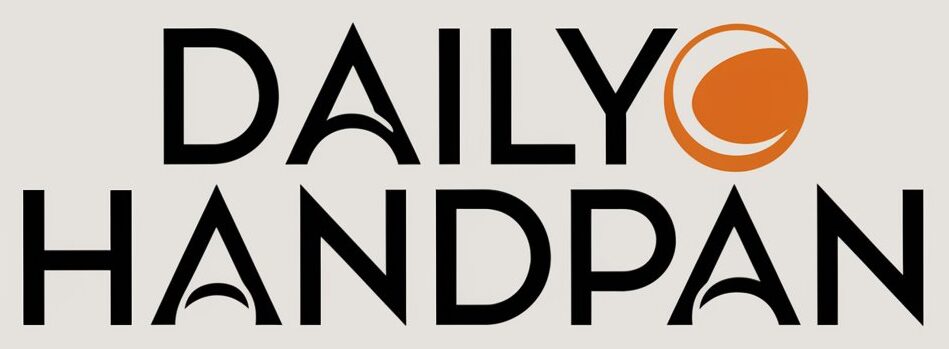The handpan, an otherworldly and enchanting musical instrument, has captured the hearts and ears of musicians and listeners alike since its introduction in the early 2000s. With its serene and mystical sounds, it serves as a perfect medium for emotional and spiritual expression. Unlike traditional instruments, the handpan relies heavily on its unique tunings and modes to produce its mesmerizing tones.
The Origin of the Handpan
The handpan originated from the steelpan tradition of Trinidad and Tobago but took a revolutionary turn under the innovative craftsmanship of Felix Rohner and Sabina Schärer of Switzerland. They created the first Hang in 2000, which evolved into what we know today as the handpan. Over the years, several artisans and companies have contributed to the evolving world of handpan, each adding their own twist and innovations to its design and sonic capabilities.
Understanding the Handpan’s Structure
A handpan consists of two steel hemispheres glued together to form a unique convex shape. The top half is usually referred to as the “ding” side, featuring a central note called the “ding,” surrounded by a circle of tuned tone fields. The bottom half may house the “gu” hole, an opening that contributes to its acoustic properties. Each tone field on the handpan holds a specific note, and when struck, it produces harmonious vibrations.
The Importance of Modes in Handpan Music
Modes play a significant role in the distinct sound palette of the handpan. Unlike conventional Western scales, handpan modes often derive from various cultural and musical traditions around the world. These modes significantly impact the mood and atmosphere of the music created on the handpan.
Exploring Various Handpan Modes
Dorian Mode
The Dorian mode is known for its balanced and soulful tone, making it perfect for expressing deeper emotions. Originating from the ancient Greeks, this mode is the equivalent of playing a natural minor scale with a raised sixth. When applied to the handpan, it creates a sound that is neither too happy nor too sad. The interval pattern of the Dorian mode is whole, half, whole, whole, whole, half, whole.
Mixolydian Mode
The Mixolydian mode carries a distinctly uplifting and slightly mystical quality. It is essentially a major scale with a lowered seventh degree. This mode has been widely used in various genres, from traditional music to modern jazz. On the handpan, it provides an exotic and intriguing tonality, often evoking a sense of adventure. The interval structure is whole, whole, half, whole, whole, half, whole.
Harmonic Minor Mode
The harmonic minor mode adds an element of drama and intensity to the handpan’s sound. It is characterized by an augmented seventh degree, creating a distinct gap that generates tension and resolution. This mode is popular in both classical and contemporary compositions, offering a versatile range of expressions from somber to fiery. The interval pattern is whole, half, whole, whole, half, augmented second, half.
Phrygian Mode
Known for its dark and exotic sound, the Phrygian mode is particularly famous in flamenco and Eastern music. It serves as the third mode of the diatonic scale and is marked by a lowered second degree, which gives it a unique, almost mysterious edge. The Phrygian interval structure is half, whole, whole, whole, half, whole, whole.
Pentatonic Modes
Pentatonic scales are foundational in many musical traditions globally, and their simplicity translates beautifully to the handpan. These five-note scales (as opposed to the typical seven-note scales) offer a straightforward yet profound melodic framework. There are various types of pentatonic scales, but the most common are the major and minor pentatonics. Each brings a different mood—while the major pentatonic is uplifting and hopeful, the minor pentatonic tends to be more introspective and contemplative.
Adapting Personal Musical Styles to Handpan Modes
One of the most fascinating aspects of the handpan is its adaptability to different musical styles. Whether you are inclined towards jazz, folk, classical, or experimental music, you will find a mode that complements your artistic voice. Musicians often explore various modes to match their emotional tone and the narrative they wish to convey. By establishing a core relationship with a specific mode, you can expand your creative horizons.
How to Choose the Right Handpan Mode for You
Selecting the right handpan mode for your musical journey can be a deeply personal and transformative experience. Here are some steps to guide you:
- Identifying Your Emotional Tone: Determine the primary emotions you want to evoke in your music. This will help you pinpoint which modes resonate most with your emotional landscape.
- Listening Practice: Spend time listening to recordings from a variety of modes. Note which ones capture your attention and elicit a deeper emotional response.
- Experimentation: If you have access to a handpan or a virtual handpan app, experiment with different modes to see which ones feel most natural under your hands.
- Consulting with Makers: Many handpan makers are knowledgeable about different modes and can recommend one based on your musical preferences and goals.
Conclusion
The exploration of handpan modes opens a portal to a sonic universe rich with possibilities. Each mode has its unique characteristics, enabling musicians to express a wide range of emotions and atmospheres. By understanding and experimenting with these modes, handpan players can craft deeply personal and transformative musical experiences. Whether you’re a novice or a seasoned player, delving into the mystical modes of the handpan offers an endless journey of artistic discovery and fulfillment.
Frequently Asked Questions (FAQs)
1. What is the origin of the handpan?
The handpan originated in the early 2000s through the innovative craftsmanship of Felix Rohner and Sabina Schärer of Switzerland. They created the first Hang, which evolved into the handpan, a unique instrument inspired by steelpan traditions from Trinidad and Tobago.
2. How does the mode of a handpan affect its sound?
The mode of a handpan determines its tonal and emotional character. Different modes, such as Dorian, Mixolydian, or Phrygian, utilize distinct interval structures, resulting in varied sound palettes that influence the mood and atmosphere of the music.
3. Can I customize a handpan’s mode?
Yes, many handpan makers offer customization options where you can choose the mode you prefer. By working with these artisans, you can create a handpan tailored to your specific musical style and emotional expression.
4. What genres of music can be played on a handpan?
The handpan is incredibly versatile and can adapt to various musical genres, including jazz, folk, classical, ambient, and experimental music. The choice of mode further influences its suitability for different styles.
5. How do I start learning to play the handpan?
To start learning the handpan, consider watching online tutorials, taking lessons from experienced players, and joining handpan communities. Experimenting with different modes and practicing regularly will also help you develop your skill and unique sound.





